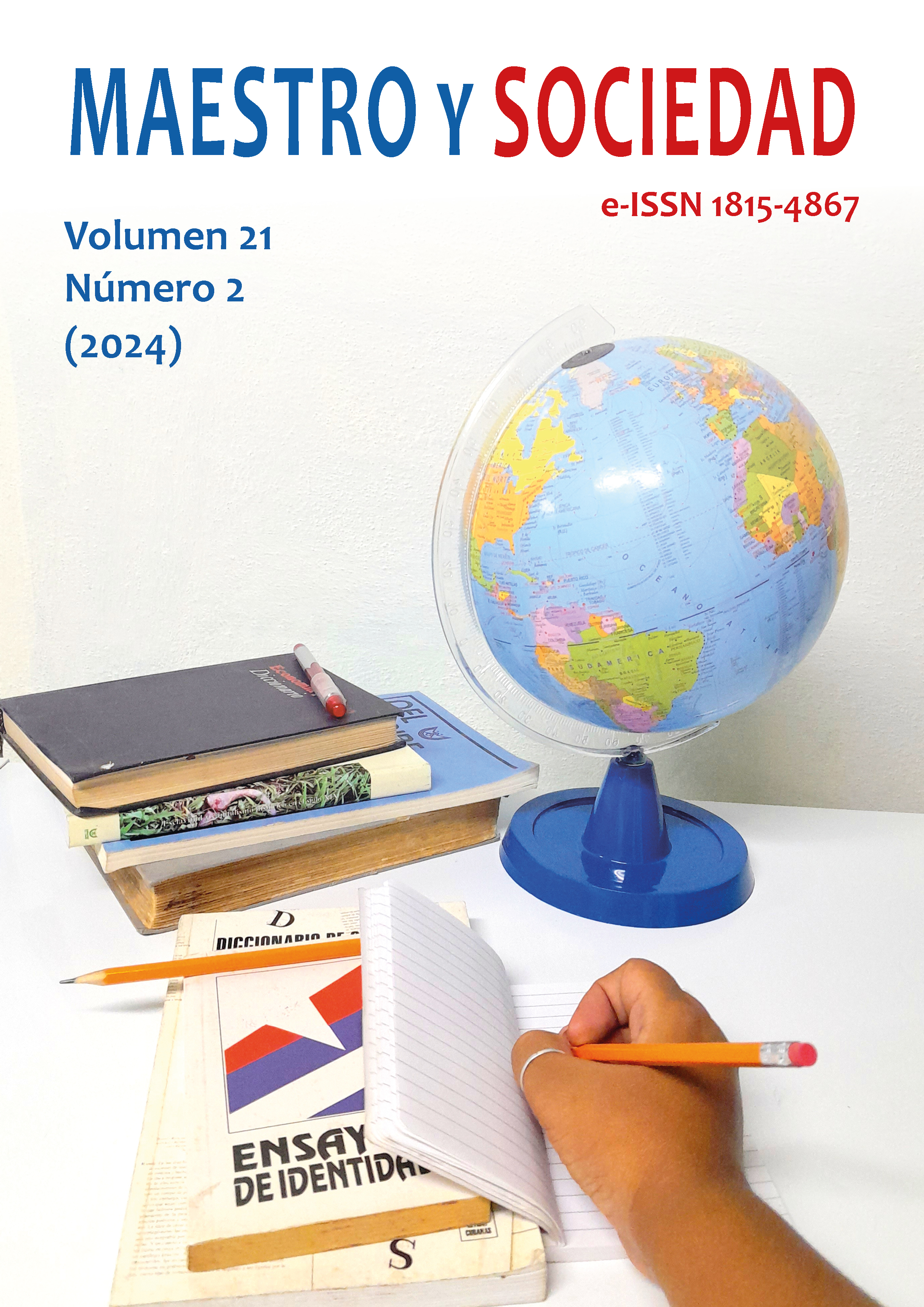Didactic resource for the teaching-learning of mathematical operations combined with fractions in the eighth year of the Chapints Educational Unit
Keywords:
didactic resource,teaching-learning, combined operation, solved exercisesAbstract
Introduction: The research aims to determine the effect of the exercises solved on mathematical operations combined with fractions in eighth grade students of the CHAPINTS educational unit. Materials and methods: To do this, first, a diagnosis was made on the learning of combined operations, an improvement proposal was applied using as a teaching resource a booklet with activities solved to strengthen the learning of combined operations and finally the influence of this teaching resource on the learning of combined operations. The research used is descriptive, with a pre-experimental design. Observation, field, documentary-bibliographic methods were mainly applied to a sample of 33 students in a population of the eighth grade of the CHAPINTS educational unit. Results: After using solved exercises on combined operations with fractions, a statistically significant improvement was observed in the students' performance in the post-evaluative test. Discussion: The use of solved exercises increases students' understanding of concepts and should, therefore, be applied. This is because students have the opportunity to interact with materials and with their classmates to find solutions among themselves, based on solving the problems. Conclusions: It is concluded that the research contributes significantly to the learning process of combined operations with fractions, aspects that are demonstrated through the use of solved exercises that showed improvements in the learning and academic performance of the students.
References
Adendorff, S. A. (2018). Uso de manipulativos por parte de los profesores de la fase básica para enseñar conceptos numéricos: un análisis crítico. Uso de manipulativos por parte de los profesores de la fase Foundation del South African Journal of Foundation para enseñar conceptos numéricos: un análisis crítico. Revista Sudafricana de Educación Infantil, 1-9.
Andamon, J. C. (2018). Comprensión conceptual, actitud y desempeño en matemáticas de estudiantes de 7mo grado. Revista internacional de investigación científica y tecnológí, 96-105.
Ausubel, D. P (2002). Adquisición y retención del conocimiento. Una perspectiva cognoscitiva. Ed. Paidós.
Braithwaite, D., & Siegler, R. (2021). Uniendo fracciones. Revista de Psicología Educativa,
(3), 556–571.
Campoverde-Cabrera, M. F., & Villacrés-Plaza, D. J. (2019). Grupos interactivos: implementación de una secuencia didáctica lúdica y materiales concretos para la enseñanza aprendizaje de las operaciones básicas con números fraccionarios de 5to y 6to de educación básica(Tesis de pregrado). Universidad Nacional de Educación, Azogues, EcuadorColectivo de autores. (2021). Curriculo priorizado. Quito: Ministerio de Educación.
Coper, Y.G. (2021). Comprensión conceptual de los profesores sobre las operaciones con fracciones: resultados de una muestra nacional de profesores de escuela primaria.Estudios Educativos en Matemáticas, 7(3), 151-159.
Fandiño, I. (2009). Las Fracciones: Aspectos Conceptuales y Didácticos Cooperativa. Editorial Magisterio Bogotá.
Flores R. (2011). Los significados asociados a la noción de fracción en la escuela secundaria. ALME 24 2011.
Maldonado, S. I. (2018). Language minority student' mathematics achievement in urban schols: Coursework, race-ethnicity, and English-languague proficiency. Penn GSE Perspectives on Urban Education, 15(1), 1.
OECD. (2017). OECD sicence, teccnology and innovation outlook 2026.OECD Publishing.
Ramadianti, W., Priatna, N., Kusnandi, K., (2019). Análisis de conceptos erróneos de estudiantes de secundaria en la interpretación de fracciones. Revista para la educación de jóvenes científicos superdotados.DOI:http://dx.doi.org/10.17478/jegys.631567
Sulistyaningsih, D. M. (2017). Manipulatives implementation for supporting learning of mathematics for prospective teachers. Journal of Physics: Conference Series, 12-47.
U.S. Department of Education (2008). Foundations for success: Final report of the national mathematics advisory panel 2008. National Mathematics Advisory Panel. https://bit.ly/3yBuX
Vargas-Murillo, G. (2017). Recursos educativos didácticos en el proceso enseñanza aprendizaje. Cuadernos Hospital de Clínicas, 58(1), 68-74.
Vargas-Vargas, N. A., Niño-Vega, J. A., & Fernández-Morales, F. H. (2020). Aprendizaje basado en proyectos mediados por tic para superar dificultades en el aprendizaje de operaciones básicas matemáticas. Revista Boletín Redipe, 9(3), 167-180. https://doi.org/10.36260/rbr.v9i3.943
Villacreses, E. G., Romero Yela (2016). Los recursos didácticos y el aprendizaje significativo en los estudiantes de bachillerato´ Recursos didácticos y el aprendizaje significativo. SINAPSIS,.
Vygotski, L.S. (1933). Pensamiento y lenguaje. Buenos Aires: La Pléyade.
Wang, A., Schumache, R., Dougherty, B., Wavell, S.,Dimino, J.,Gersten, R., (2024): Ejemplos trabajados para promover explicaciones de conceptos de fracciones: Un estudio piloto formativo. Investigación y práctica sobre discapacidades del aprendizaje. 1-4
Published
How to Cite
Issue
Section
License
Copyright (c) 2024 Jinson Dario Martinez Oñate , Myriam Gabriela Tunki Sanchim, Katia Lisset Fernández Rodríguez, Wilber Ortiz Aguilar

This work is licensed under a Creative Commons Attribution-NonCommercial-NoDerivatives 4.0 International License.
This journal provides immediate open access to its content, based on the principle that offering the public free access to research helps a greater global exchange of knowledge. Each author is responsible for the content of each of their articles.



























 Universidad de Oriente
Universidad de Oriente 